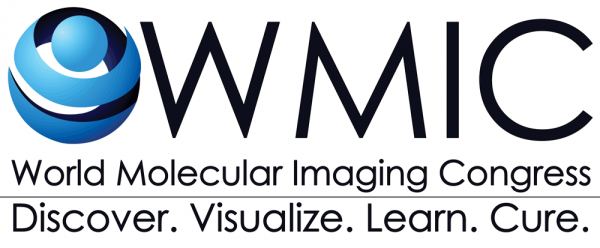AS1411 aptamer guided QD655 labeled DNA Origami working as a novel nanoprobe for fluorescence molecular imaging in breast tumor mouse model
Yang Du, Institute of Automation
Aims: DNA-based nanostructures have been widely utilized in various applications due to their structural diversity, programmability and uniform structures, and their intrinsic biocompatibility and biodegradability further motivates the investigation of DNA-based nanostructures as delivery vehicles. DNA origami nanostructures exhibited great potential application in molecular imaging, targeted payload delivery and controlled drug release. AS1411 is a DNA aptamer that specifically binds to the nucleolin, a protein highly expressed in the plasma membrane of cancer cells and has been successfully exploited as a targeting ligand for tracking tumor cells. The aim of this study is to create a novel fluorescence imaging probe by assembling QD655 onto the surface of AS1411 aptamer conjugated DNA origami delivery system, which may facilitate a more efficient and specific accumulation of probes at the tumor sites in vivo with improved fluorescence imaging of tumors.
Methods: Human MDA-MB-231 breast tumor bearing nude mice were used, and AS1411-QD655-DNA Origmai probes were injected intravenously. Small animal optical molecular imaging system (IVIS Imaging System, Caliper, USA) was used for animal fluorescence imaging acquisition. Imaging was performed before injection and 1 h, 4 h, 6 h, 12 h and 24 h after probe injection.
Results: The result showed that there was no fluorescence signal in the control group, and the QD655 signal was distributed allover the mouse body without specific accumulation at the tumor site in the free QD655 treated group during the whole 24 h obesrvation. In the QD655 labeled DNA origami (QD655/DO) treated tumor bearing mouse, the strong fluorescence can be detected both in the liver and tumor sites 1-6 h after injection, and then the signal gradually decreased at both sites thereafter. While in the AS1411 aptamer guided QD655 labeled DNA origami (QD655/DO-AS1411) treated mice, we found that the signal can be detected both in the liver and tumor sites 1 h after injection, and then stronger and more specific signal can be detected at the tumor site and decreased signal in the liver tissues 4-24 h postinjection. Moreover, the strong fluorescence signal of tumors can be maintained till 24 h. It suggested that through specific binding to the nucleolin expressed in the cytoplasm of cancer cells, AS1411 aptamer can promote the diffusion of QD655 labeled DNA origami nanoparticles to the tumorous mass and facilitated targeted molecular imaging of tumors in vivo.
Conclusion: Incorporating AS1411 aptamers into DNA origami leads to enhanced intracellular uptake by cancer cells, achieved the improved targeted imaging of tumors in vivo. Furthermore, fluorescence labeled and aptamer-displaying DNA origami can further work as imaging guided nanoparticle for tumor therapy. These findings reinforce the potential of DNA-based nanostructures for theranostic applications.
View presentation
Note: This is the 5th presentation in the session, starting at approximately 46:11.
Access to the WMIC 2015 presentations is free of charge with simple sign-in.
